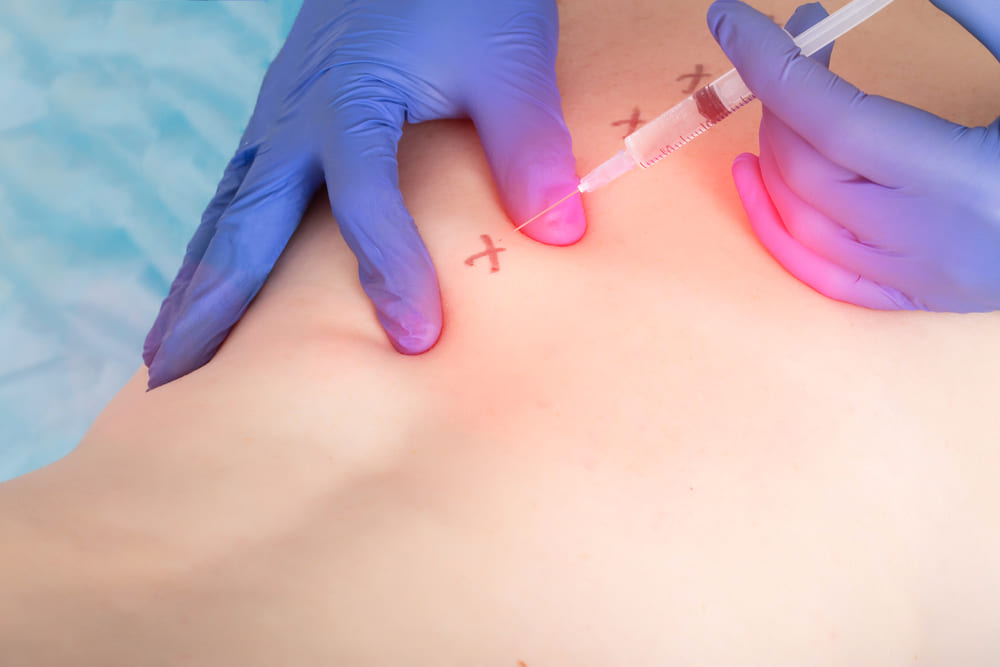Amongst anesthetics, procaine is especially unique in both its benefits and mechanisms. For many reasons it is the medicine of choice for regenerative injection techniques like prolotherapy, neural therapy, and perineural therapy. Procaine is much more than an anesthetic, imparting medicinal benefits beyond anesthesia. In this blog I discuss a few of the many unique properties of procaine such as its’ ability to heal damaged nerves, correcting misfiring, as well as its ability to help heal and restore balance to a dysfunctional autonomic nervous system (ANS).
Owes its existence to cocaine
Before the addictive nature of cocaine was known, surgical pioneer William Halsted used cocaine as a local anesthetic in procedures and experimented with it on himself. Halsted’s career was cut short due to a cocaine addiction that developed from his experimentation. Meanwhile, across the ocean Sigmund Freud had become a heavy user of cocaine himself, along with a close colleague of his. As the medical community became aware of cocaine addiction, the search for an alternative began. Novocaine became the first effective yet non-addictive alternative.
The most therapeutic of local anesthetics
Novocaine (p-amino-benzoyl diethyl-aminoethanol hydrochloride) was discovered in 1905 by German Chemist Alfred Einhorn, while working with cocaine. It ultimately became the first commercially available local anesthetic and became widely used as a local anesthetic in surgery and dentistry. Procaine is the generic form of Novocaine. It is distinct from other anesthetics, being an amino ester because it can be broken down anywhere in the body by the enzyme plasma cholinesterase within forty minutes. It is broken down into only two ingredients, the vitamin PABA (p-aminobenzoic acid), the precursor to folinic acid (a form of folate and folic acid) and the other, diethyl-aminoethanol, a vasodilator that lowers blood pressure. While amine anesthetics require near total metabolism by the liver, take longer to breakdown and lack a therapeutic effect beyond procedural anesthesia. Here is what’s different about procaine’s actions.
Procaine heals peripheral nerve dysfunction
Procaine heals dysfunctional peripheral nerve cells by correcting restricted blood flow, enhancing oxygen and nutrient delivery, facilitating the removal of cellular waste, and decreasing inflammation; all of which restores cellular healing.
Equally central to procaine’s unique medicinal actions are its ability to increase the threshold required for pain signals to fire. It does this by restabilizing the nerve’s resting equilibrium. The threshold by which healthy nerve cells fire pain signals is far greater than in unhealthy nerve cells. For dysfunctional nerve cells, the threshold is diminished allowing the constant firing of pain signals and firing with the slightest provocation. Procaine helps to reestablish a proper firing threshold, so pain is not constantly experienced. These benefits last beyond the duration of its anesthetic effects.
Procaine therefore simultaneously corrects the features that interfere with healing, resets dysfunctional nerve cells and decreases pain sensitivity. As mentioned, this effect lasts longer than the anesthetic effect itself and with ideal application the effect can be permanent.
Procaine rebalances the autonomic nervous system
In a high stress society, sympathetic overdrive is the norm. Think of “fight or flight.” The ANS is the portion of our nervous system under involuntary control like our heart rate and digestion. On the other hand, the parasympathetic nervous system predominates “rest and digest.” Ideally, we spend more time in a parasympathetic state. Characteristics associated with the parasympathetic nervous system are relaxation, healing, lowered blood pressure, less inflammation, more restorative and restful sleep, calmness, improved digestion, lower heart rate, improved immunity and better glucose control. Procaine acts to dampen the sympathetic response by blocking beta-receptors and by lowering the level of excitatory neurotransmitters like epinephrine and norepinephrine. In this way the administration of procaine supports balancing of the autonomic nervous system, helping to support and nourish the parasympathetic side to restore its dominance. To balance the ANS, the vagus nerve is often treated with procaine. With administration of procaine, patients often feel an immediate calmness, relaxation and even a cooling sensation. When administered in the ideal location the effect is often permanent. This makes procaine an ideal therapy for highly stressed and anxious individuals who often find themselves in sympathetic overdrive.
Summary
Procaine is the generic form of Novocaine, which was the first commercially available local anesthetic. German Chemist Alfred Einhorn derived Novocaine from cocaine, in effort of establishing a less addictive anesthetic. Procaine is unique in both its structure, metabolism and function. Unlike other anesthetics, procaine acts to heal peripheral nerves, reestablishes an appropriate resting equilibrium of nerves and helps heal and reset a dysfunctional autonomic nervous system; thus, helping rescue individuals from sympathetic overdrive.
Dr. Ayo Bankole
Dr. Ayo Bankole is a California-licensed naturopathic doctor with advanced training in Prolotherapy. He is a member of the American Osteopathic Association of Prolotherapy and Regenerative Medicine and offers natural, non-invasive solutions for chronic pain conditions.
Want to know if Regenerative Therapies are right for you?
Call 909-981-9200 to schedule a free Discovery Call today.

